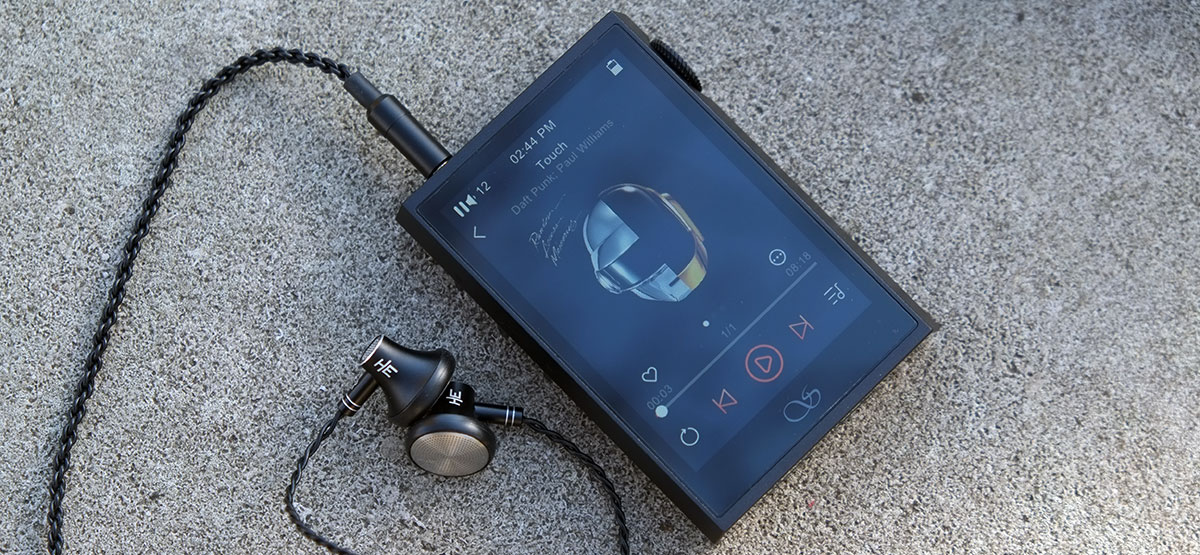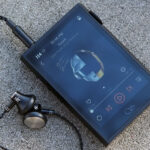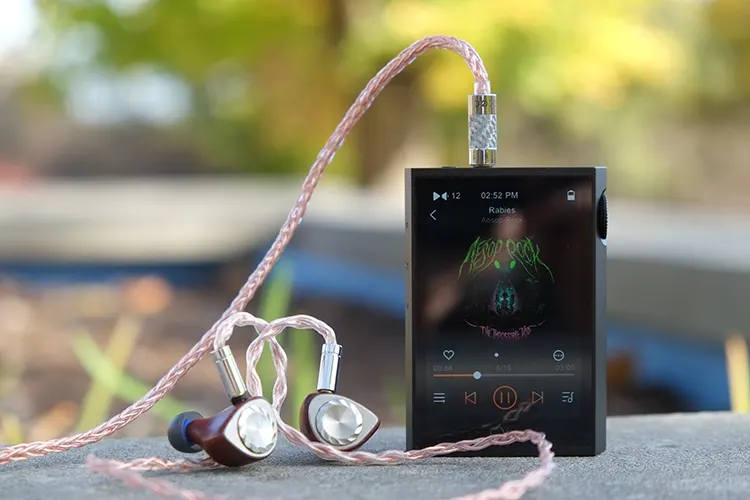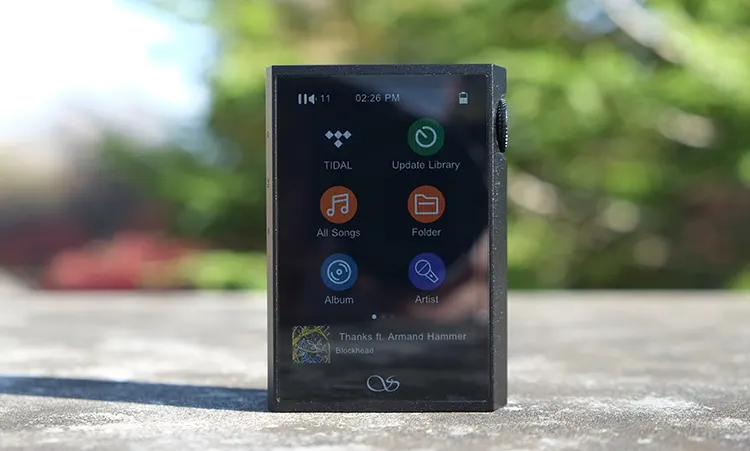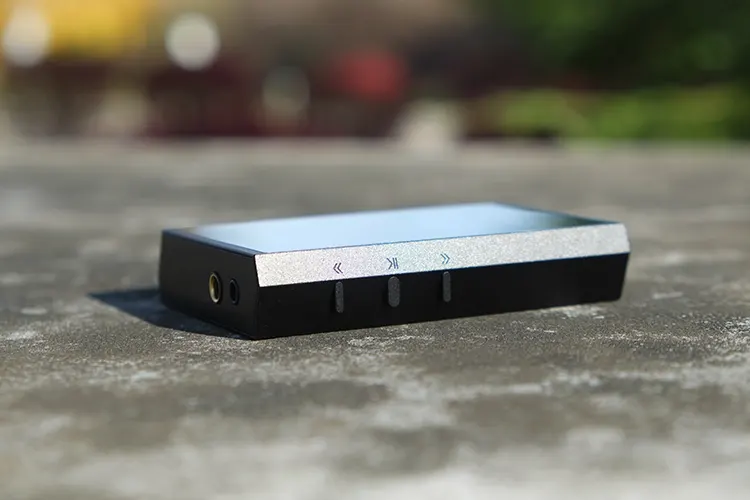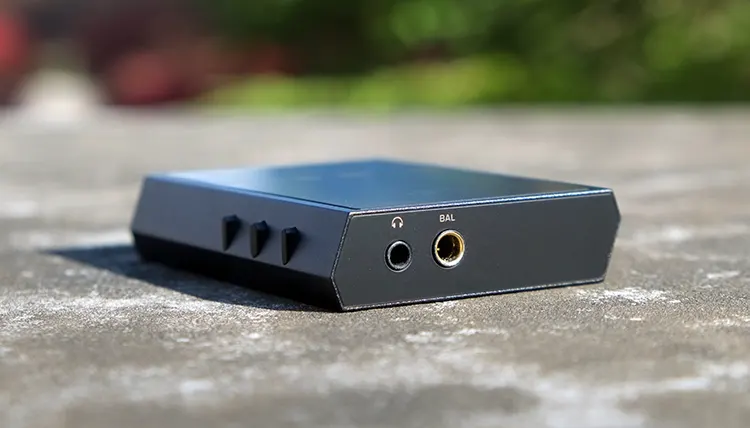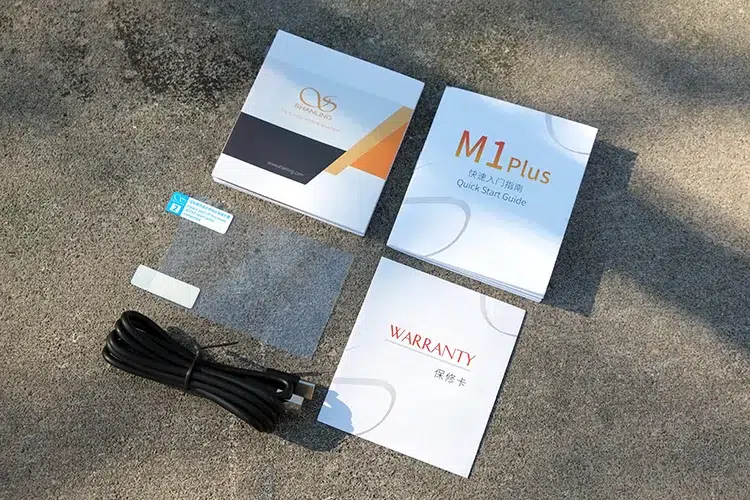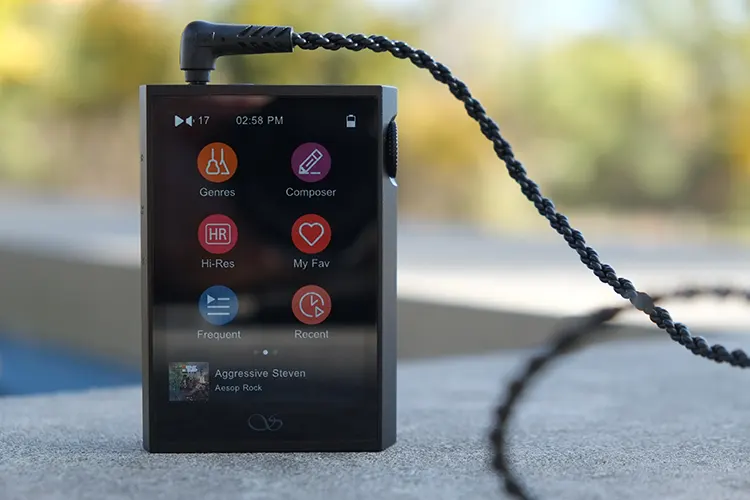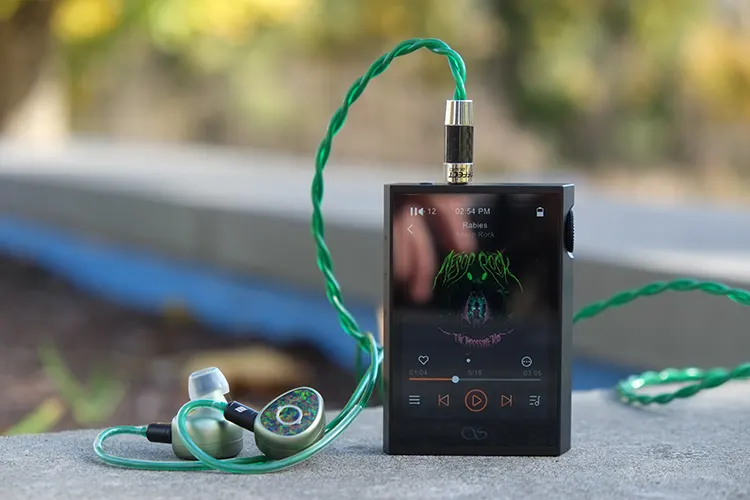Today, Thomas reviews the Shanling M1 Plus, an affordable new balanced-capable MTouch OS digital audio player with up to 660mW output power. It is priced at $209.
Disclaimer: This sample was sent to me in exchange for my honest opinion. Headfonics is an independent website with no affiliate links or status. I thank Shanling for their support.
Click here to learn more about Shanling products we previously reviewed on Headfonics.
This article follows our current scoring guidelines which you can read in more detail here.
In this review, I am checking out the Shanling M1 Plus, an affordable alternative to the M5 Ultra released earlier this year. In Shanling’s vast lineup of DAPs, the M1 Plus slots just above their most affordable players, the M1s and M0 Pro.
Despite the low cost, the M1 Plus is feature-rich with plenty of power on tap from single-ended and balanced outputs.
It utilizes the newest iteration of Shanling’s MTouch OS platform, an interface I have enjoyed since first experiencing it in 2018’s M0, a device I still routinely use.
With a music-focused operating system devoid of unrelated apps and distractions, an attractive design, low price, and a vast feature set, the M1 Plus makes a strong case for carrying a dedicated music player in 2024 and beyond.
Features
MTouch OS in its newest iteration can be found in the M1 Plus. I quite liked its implementation in 2018’s M0 and can appreciate how it has been updated and enhanced to work on a screen with considerably more real estate.
Versatility to pair with various earphones comes via 3.5mm single-ended and 4.4mm balanced outputs. Inside is an ESS ES9069Q DAC with dual SGM8262 amplifiers pumping out 660mW @ 32Ohm of power through the 4.4mm balanced out.
Shanling has simplified the M1 Plus software using their MTouch OS instead of Android, though you still have native Tidal support. You can also control the DAP through the Eddict Player app on your smartphone
Lastly, the M1 Plus is equipped with bi-directional Bluetooth 5.2 with support for LDAC, aptX, aptX HD, and AAC codecs. Not only will it sound good but it will offer a strong, stable connection with plenty of range.
Design & Controls
Shanling crafted a beautiful device with the M1 Plus. Made from aluminum and glass with a modern, angular design, it looks and feels excellent in the hand.
Down the left side of the device are three buttons used to skip through and play/pause your tracks. The base of each button protrudes from the body with the outer two buttons having a slimmer profile to help differentiate them without the need to look.
They depress with a satisfying “click” and are easily accessed while holding the M1 Plus with one hand.
On the right side of the device is a scroll wheel used to adjust volume. It doubles as a button when depressed and turns the screen on and off.
This is the best wheel I’ve experienced from the brand. The one on the original M1 worked fine but was too easy to press accidentally and was known to be delicate, though I never had issues with mine.
The scroll wheel on the original M0 was stiff to turn, hard to access with a case on, and too easy to press accidentally. The scroll wheel on the M1 Plus is perfectly weighted with clean detents as you spin and requires just the right amount of pressure to access the button aspect.
The atmosphere light residing behind the wheel, lighting it in darkness, is a nice touch and further adds to the premium air of the device.
Dominating the front of the M1 Plus is the 3.2-inch touchscreen. While it is responsive and works perfectly, the 480 x 320 resolution is low and visibility is lacking in direct sunlight.
This is especially noticeable when sat next to the 3-inch 800 x 400 IPS display of the more affordable Hiby R1 which is sharper and more vibrant.
Battery Life
The M1 Plus is officially rated for up to 12.5 hours via the single-ended output.
I tested through the single-ended output with the volume set to 12, using a Campfire Audio Mammoth and a mix of standard and Hi-Res files with Wi-Fi and Bluetooth turned off, the atmosphere lamp on (blue), and the screen off most of the time.
Throughout a week of using the M1 Plus at work, it routinely lasted between 10.5 hours and 10.75 hours and a little short of the rated 12.5 hours, despite pairing it with an easy-to-drive IEM, limiting screen use, and listening at low volumes.
I/O
With the M1 Plus, you can connect to various devices through the USB-C port on the bottom. It has worked seamlessly with the numerous PC and Android devices I’ve plugged it into.
You can update the firmware via SD card which is a clumsy process. I recommend updating over WiFi instead which is considerably faster and easier.
Next to the USB port is a Micro SD card slot with support for up to 2TB cards. The M1 Plus does not have any onboard storage, so unless you’re planning to use the Tidal streaming support exclusively, you’ll need to load up a card to listen to music, podcasts, or whatever media you’re keen on listening to.
On top of the M1 Plus are two output ports. One supports 3.5mm single-ended headphones, while the other supports 4.4mm balanced headphones.
Packaging & Accessories
The M1 Plus arrives in a silver cardboard box with a white exterior sheath. This sheath is informative and useful with an attractive layout but does nothing to display what the product inside looks like, odd given how proud Shanling is (and should be) of their modern design language.
Sliding off the sheath and lifting the box’s lid, the M1 Plus greets you, tightly cradled in dense, protective foam, above a slender cardboard insert containing a Type-C USB cable. Removing the foam reveals another insert containing the remaining accessories.
In all you receive:
- M1 Plus DAP
- Type-A to Type-C USB cable
- Screen protector
- Quick Start guide
- Warranty card
- Product showcase pamphlet
While it is not a luxurious unboxing rich in extras, I wouldn’t expect it to be given the M1 Plus is an affordable DAP. The USB cable is a useful length, and the extra screen protector (one comes preinstalled) is welcome.
It would have been nice if a basic protective covering was included but Shanling has made a leatherette option available separately for around $15. It is a good, though basic case, and you need to be willing to pay extra for it.
Software Impressions
Featuring the newest iteration of MTouch OS (updated to version 1.7), the M1 Plus felt familiar on first use. The M0 that I still use features an earlier iteration of this software, though designed for a considerably smaller screen.
The main screen can display 6 icons per page with up to 17 icons total. You can add and remove icons by scrolling to the rightmost page, and then scrolling right-to-left across the screen to select which items to display.
Being able to tap and hold to move and arrange icons would be nice, but that doesn’t seem to exist. Instead, you must add them to the screen in the order you want them to appear.
Swiping from the top down brings up a quick menu. It gives you access to nine commonly used items like Bluetooth, Wi-Fi, and screen brightness.
I appreciate that the track playing always appears at the bottom of the screen when on the home menu and can be tapped to bring you to the now-playing screen. It would be nice if there were an option to have it appear while in sub-menus as well.
Overall, I find the UI’s layout logical and navigation intuitive. I never found it confusing to locate what I needed or figure out how a feature worked.
Bugs
That said, there were two bugs I have come across. The first is that the time continuously changes.
Regardless of whether I set the time manually or automatically by selecting a time zone, the clock is likely to be wrong at some point shortly after correcting it, sometimes. I say sometimes because on some days, it’s correct and it’ll be that way all day, while on others, it simply fails to stick to the correct time no matter what.
The second is that not all songs appear in the “All Songs” menu. Songs that do not appear in the “All Songs” menu will appear in the “Folders” menu, at the bottom below all the folders.
It seems to be tied to whether the songs are in the SD card’s root folder or a sub-folder. Songs in a sub-folder show up in the “All songs” menu while songs in the root menu only appear in the “Folders” menu.
Sound Impressions
The following sound impressions of the Shanling M1 Plus were completed with the HE 150PRO, Massdrop x Mee Audio Planamic, I/O Audio VOLARE, and the Lime Ears TERRA.
Summary
With the M1 Plus, Shanling dialed in a well-balanced sound that sits somewhere between the original M1 which has a leaner, cooler presentation, and the M0 which is thicker and warmer.
The M1 Plus is near-neutral with a mild mid-bass bump that gives vocals some added warmth and density, but not at the expense of clarity or extreme coloration.
Signature
Thanks to its near-neutral tuning and quality components, the M1 Plus offers a refined listening experience.
It provides an outstanding end-to-end extension that is well-suited to everything from simple single-dynamic equipped earbuds like the HE 150PRO to more exotic offerings like the I/O Audio VOLARE with its combination of dynamic, BA, and electrostatic drivers.
The M1 Plus treble presentation is clean and smooth, and since it doesn’t exaggerate or boost the upper ranges of the products playing through it, pairs nicely with treble prominent gear.
The Astrotec Phoenix’s electrostatic tweeters can be loose and harsh through the wrong device, but when listening with the M1 Plus are clean, defined, and similarly natural to how they are when paired with my desktop amp, the TEAC HA-501.
The M1 Plus mids are accurate and natural with a tilt toward being warm. The added thickness brought on by the mild mid-bass bump helps give products with a thinner midrange, such as the Elysian Acoustic Labs PILGRIM, more weight and prominence, without negatively harming products already beset with a thicker midrange.
It also does a great job of leaving a product’s natural timbre qualities alone. Standouts like the VOLARE from I/O Audio remain accurate, but this also means the wonkiness of something like FiiO’s FH1s is retained.
The M1 Plus low-end performance is impressive and products excelling in this area, like the Astrotec Phoenix, absolutely shine. There is no early roll-off so earphones with extended sub-bass presence provide the sort of visceral feedback you’d expect.
Detail, clarity, and texture across the board are also fantastic with the M1 Plus getting out of the way. Products that excel in these areas like I/O Audio’s VOLARE are not held back in any way, and products that are lacking, such as Astrotec’s Volans, remain so.
Staging & Dynamics
The M1 Plus staging and dynamic presentation is a clear positive.
The M1 Plus moves the default vocal positioning of products further back and enhances products with an already good sound stage, such as the I/O Audio VOLARE.
The effect is more prominent on products with a compact stage, like Campfire Audio’s original Polaris which not only sounds wider through the M1 Plus but gains stage depth which it is sorely lacking when run through most sources I’ve tried it with.
The M1 Plus’s open staging also helps improve layering and instrument separation. While the Lime Ears TERRA isn’t lacking in these qualities in the mids and treble, the low-end benefits from what the M1 Plus brings to the table and balances out the earphone’s presentation.
Imaging from the M1 Plus is also improved on products that lack precision. The TERRA from Lime Ears lacks precision just off-center, though through the M1 Plus I heard improvements, particularly when running it as a DAC and using the TERRA for gaming.
Click on page 2 below for my recommended pairings and selected comparison.

